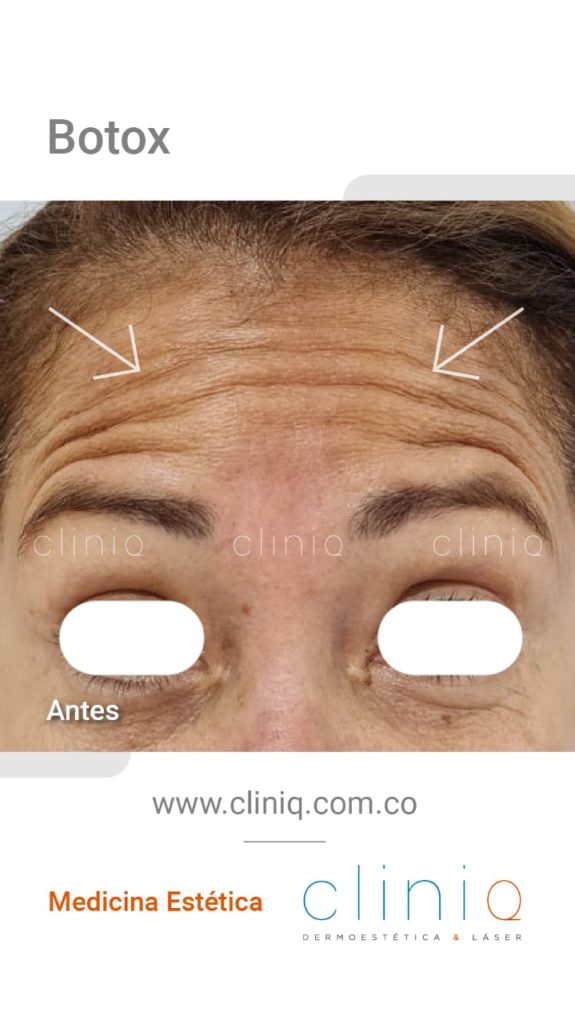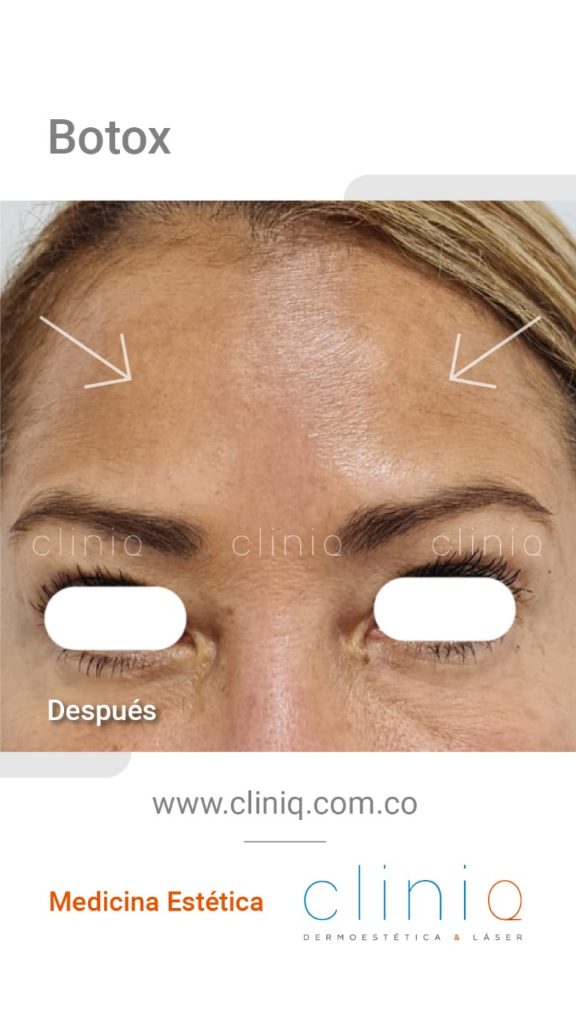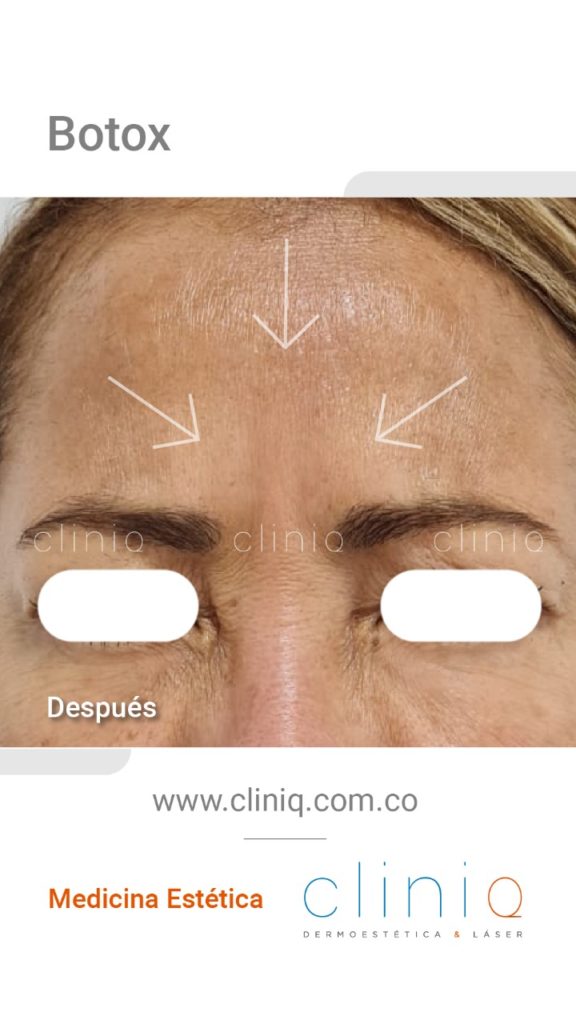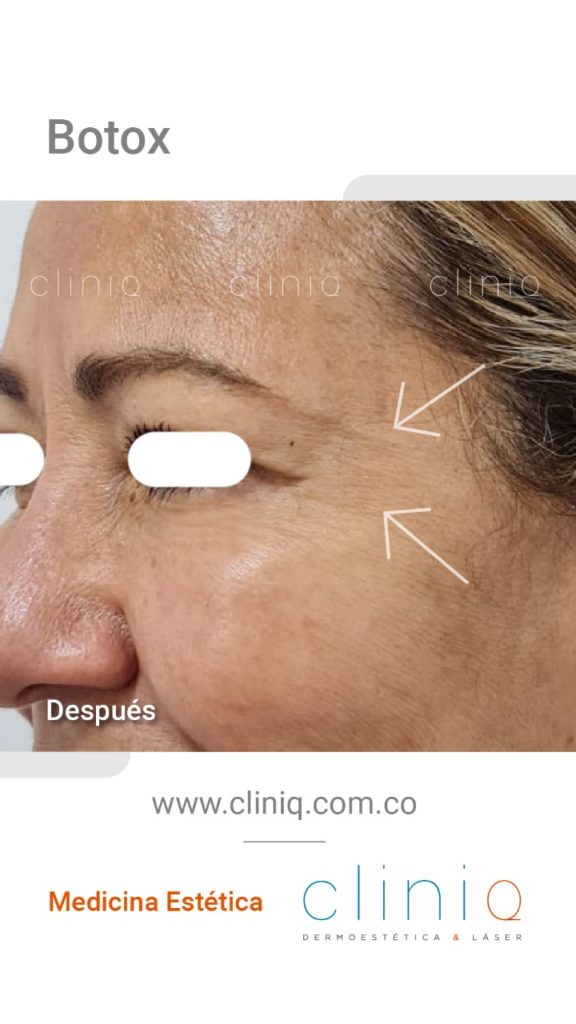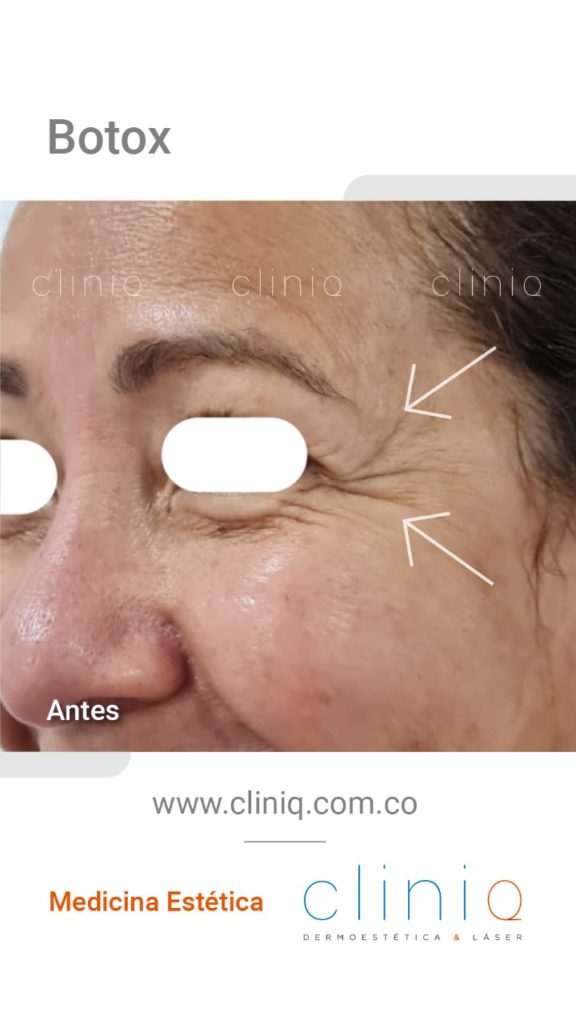Do you know what Botox is?
Botulinum toxin, commonly known as Botox (trademark of a trademark), is one of the most used treatments to treat face expression wrinkles. Both women and men use it.
In this article we will tell you what Botox is and its benefits, and we will clarify some doubts about its use and risks. The first thing you should know is that The Botox It is a botulinum toxin, that is, a treatment that relaxes the muscles so that they do not contract. In this way, the marking of wrinkles is avoided. Botox is the most famous brand of this type of anti-wrinkle treatment and is the one we use at Clinq.
How does botulinum toxin work?
The facial wrinkles of the upper third of the face: forehead, implantation line of the scalp, between the eyebrows and what we commonly know as goosebumps, are mainly generated by the contraction of the muscles when gesturing, as when we raise our eyebrows, we put the Brows or smile.
These wrinkles are called dynamic lines or wrinkles because they only occur with contraction of the muscle, but when gesturing repeatedly and for long periods in our lives, those lines remain marked on our faces even if we do not gesture. This is what you want not only to avoid, but also deal with the Botox injection.
These medical applications are made injected with a very small needle, its effect causes a relaxation of the muscles so that the natural expressions of our face are preserved, but without marking the wrinkles as when we gestulate. It is usually applied to the forehead, the brow and the ‘chicken feet’. However, in very particular cases, it can be applied to the lower part of the face and neck.
Botox: How long does it last?
The effect of Botox begins to be visible 3 to 5 days after its application, as the days go by we begin to notice that the muscles no longer contract the strong way we were used to. These changes are gradual and occur more and more up to 15 days after treatment, which is when the effect is complete.
The effect of Botox lasts between 4 and 6 months, but also depends on each patient. For example, in high-performance athletes, the effect can have a shorter duration because they are patients who gesticulate a lot due to the activities they carry out. As the face gestures less, the effect has a longer duration. According to the above, and in the case of a treatment that has different results in each person, there are patients who apply Botox once a year, another twice a year and another three times.
At what age can you start with the Botox treatment?
The botulinum toxin is not old enough to apply, the idea is to find the perfect time to start doing an aging prevention or rejuvenating.
There are 25-year-old patients who gesticulate a lot and, although they are young, they are already beginning to mark the wrinkles of expression. On the other hand, there are 55-year-old patients who gesticulate very little and have very fine lines of expression, so they will hardly start the treatment. At CLINIQ we only perform this procedure for adults with prior medical assessment.
Does Botox generate deformities or lumps?
Botox is not a filler and does not generate volume on the face. As we explained above, Botox is a muscle relaxant and for this reason it does not generate balls, headaches, deformities, muscle paralysis, neurological diseases or lumps. These types of poor results are not an effect caused by botulinum toxin.
Another reason to be sure that these types of deformities were not caused by botulinum toxin injections is for the duration of their effect: between 4 and 6 months, while lumps or lumps usually last longer or even be permanent.
With the Botox treatment, what can be generated is the effect known as ‘frozen face’, an effect that is achieved intentionally when the patient wants it, and that is achieved by applying a higher concentration of the necessary treatment. This effect is not highly recommended because it does not generate natural results in the expressions of the face.
In what other areas can Botox be applied?
Botox is not applied directly to the lips because it is not a filler and does not give volume, but it can be applied when a condition called a gingival smile exists in the patient, which is when the upper part of the gum can be seen when smiling; In this case, Botox helps to relax the muscle of the upper lip so that it does not rise so much.
A second condition is what we know as ‘barcodes’ or ‘smokers’ wrinkles’, which are all those vertical lines that are marked in the mustache area. In this case, small amounts of Botox can also be applied to decrease the strength of the muscle that marks those wrinkles.
Another exception is when the patient has bruxism, since Botox relaxes the masseter muscle so that it does less strength and helps reduce the wear and tear of the teeth.
It is also possible to apply Botox to the neck, when the patient has a condition called the ‘nefertiti lines’, lines that are usually generated in patients with a long neck, who greatly mark the muscles of this area. This is a very specific case and is only done with a medical recommendation.
What are the risks of applying Botox?
Side effects or risks are mainly minor and uncommon. Some of the adverse effects of the treatment is the appearance of small purples because it is an injected treatment or that there is some pain during the application, taking into account that this issue is individual: there are people who do not hurt anything and others who say they feel it a lot.
Another minor risk is that we have, for example, an eyebrow a little more raised than another or that the expected effect is not achieved in the 15 days after the treatment is applied. At Cliniq we did a review after 15 or 20 days, precisely to validate if there was any imperfection that should be solved.
Another negative effect, which is very uncommon, is the drop of the eyelid, where one eye can be seen a little more closed than the other. It is a very low risk, but it is reported in the literature and can be resolved by accelerating the reversal of the Botox effect.
Can Botox be applied at home?
Botox is a medical treatment, therefore, you must have all the knowledge about anatomy and the function of each muscle to know how to treat them, what should be done according to the effect that is sought, and which ones are involved in each movement of facial expression.
In addition, for safety and commitment to patients, the Botox brand is only distributed to doctors and the treatment is delivered directly to health provider institutions to prevent it from being applied by people not specialized in places such as hairdressers, gyms, spa, among others.
How many units should I apply?
As we have mentioned above, Botox does not depend on age but on gestures, and the number of units that we must apply depends on that same gesture. If I gesture a lot I should wear more or if my muscles are very weak or fragile I should wear less. That is why medical evaluation is important.
Normally a Botox treatment is between 30, 40 or 50 units in women and some men may need 60 or 70 units when they have a very strong muscle contraction. It also depends on the areas to be treated and the effect that you want to achieve on the patient.
What is the difference between Botox and hyaluronic acid?
Botox is not a filler, while hyaluronic acid is. When what the patient wants is to give volume to certain areas of his face, a padding must be applied. There are many types on the market, but one of the most used and recommended is hyaluronic acid.

